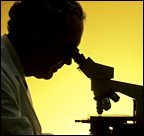Last year, the National Institutes of Health (NIH) hosted an international conference, "The Biology of Manual Therapies," at its campus in Bethesda, Md.1,2 Sponsored by the NIH and the Canadian Institutes of Health Research, the conference was considered the first of its kind to focus on biological mechanisms such as neuroscience, endocrinology, biomechanics and immunology, and the relationship of these mechanisms to therapies such as manipulation, mobilization and massage.
 While it received little attention in the national media, the Biology of Manual Therapies conference has resulted in two significant developments related to current and future manual therapy research. First, following the presentations, attendees held a series of breakout sessions and reached a consensus on 13 recommendations concerning the biological mechanisms of manual therapies. Several of the recommendations led to the attendees posing additional questions about the mechanisms of action for manual therapy, to be addressed through future studies:
While it received little attention in the national media, the Biology of Manual Therapies conference has resulted in two significant developments related to current and future manual therapy research. First, following the presentations, attendees held a series of breakout sessions and reached a consensus on 13 recommendations concerning the biological mechanisms of manual therapies. Several of the recommendations led to the attendees posing additional questions about the mechanisms of action for manual therapy, to be addressed through future studies:
Conference Recommendations and General Questions Related to Mechanisms of Action for Manual Therapies
Therapy
- Determine the effects of manual therapy in normal experimental animals and in animal models of tissue injury.
- Does applying very superficial manual therapies, such as light massage, that mainly activate skin afferents produce different effects on the nervous system, immune system, and endocrine system compared with manual therapies that also involve activation of muscle afferents?
- Does paraspinal tissue have any unique physiology compared to appendicular tissues? Is this related to the reported clinical efficacy of manual therapies?
- Do manual therapies produce long-lasting changes in the biomechanics of the spine, torso, or limbs? Are these changes associated with altered activity in the nervous system? Immune system? Endocrine system?
- Identify valid, reliable biomechanical measures (e.g., posture, kinematics, kinetics, functional imaging) that can be used to distinguish between healthy and non-healthy tissues and to subcategorize patients/clients with musculoskeletal disorders.
- Develop imaging techniques that can be used to capture dynamic in vivo responses to biomechanical signals in healthy and non-healthy tissues.
Questions Relating to Peripheral Mechanisms of Action for Manual Therapy
- Determine and compare the discharge characteristics (i.e., the pattern or frequency of action potentials) of primary sensory neurons to various types of manual therapies (e.g., high-velocity loading compared with slower loading rates). Is there any correlation with reported efficacy?
- How do various manual therapies affect peripheral nerve biomechanics?
- What path of mechanical load transmission do various manual therapies take through the body?
Questions Relating to Central Mechanisms of Action for Manual Therapy
- Determine how different types of manual therapies affect the signaling properties of neurons in the central nervous system or autonomic nervous system (i.e., do they produce long-lasting changes?).
- Do different types of manual therapies evoke different patterns of neural activity in the central nervous system or autonomic nervous system?
- Determine effects of peripheral mechanical stimuli (e.g., manual therapies) on spinal cord gating mechanisms and synaptic plasticity.
- Develop and use human models of experimental pain to determine the role of the nervous system, if any, in explaining how manual therapies work.
The second key result of the conference occurred in April 2006 with the announcement of a new initiative, developed by the NIH and the Canadian Institutes of Health Research, for the funding of ongoing manual therapy research.3 Through a new funding opportunity announcement (FOA), also titled "Biology of Manual Therapies," both organizations are inviting interested parties to apply for grants for the funding of basic research into the mechanisms of manual therapy.
The research objective of the FOA, according to a release on the NIH Web site, is to "invite applications for funding of basic, mechanistic, and/or preclinical research focused on the mechanisms underlying the biomechanical, immunological, endocrinological and/or neurophysiological consequences of manual therapies, such as spinal manipulation, mobilization and massage therapy." Conducting such studies "will both provide information on the possible mechanisms of action of manual therapies, and also provide a stronger foundation for ongoing and planned clinical studies."
Public and private institutions, including universities, colleges, hospitals and laboratories, are welcome to apply for funding, along with for-profit organizations, nonprofit organizations, government agencies and domestic institutions. Grant applicants "are encouraged to employ cutting-edge technologies to broaden or strengthen the knowledge bases needed to improve clinical practice."
At present, the total amount of funding to be awarded and the number of awards given has yet to be determined, but will depend upon the number of grant applications received, as well as the quality, duration and costs of the applications submitted. The total project period for individual grant applications may not exceed two years, with total direct costs limited to $275,000 over the project period, and a maximum of $200,000 in direct costs allowed in any single year.
All members of the chiropractic profession interested in advancing manual therapy research are encouraged to participate in the grant application process. Complete information regarding the Biology of Manual Therapies FOA can be found on the NIH Web site.
References
- NIH sponsoring conference on "manual therapies." Dynamic Chiropractic April 23, 2005.
- Khalsa PS, Eberhart A, Cotler A, et al. The 2005 conference on the biology of manual therapies. JMPT June 2006;29:341-346.
- PAR-06-312: Biology of Manual Therapies (R21). Initiative from the National Institutes of Health and Canadian Institutes of Health Research. Available online.




